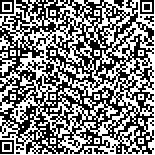| 本文已被:浏览 2186次 下载 3073次 |

码上扫一扫! |
| 一种实验犬房间隔穿刺的新方法 |
| 张志钢1△,黄松群1△,李长永1,谭洪文1,储国俊1,朱玉峰1,白元1,缪慧玉2,赵仙先1,吴弘1*,秦永文1* |
|
|
(1. 第二军医大学长海医院心血管内科, 上海 200433;
2. 南京军区福州总医院心血管内科, 福州 350025
△共同第一作者
*通信作者) |
|
| 摘要: |
| 目的 探索一种实验犬房间隔穿刺的方法。方法 健康犬10只,体质量10~15 kg,麻醉后穿刺股静脉置入鞘管,经鞘管送入0.032 英寸(1 英寸=2.54 cm)导引导丝至上腔静脉,沿导丝将房间隔穿刺鞘送入上腔静脉,退出导丝经穿刺鞘送入Brockenbrough穿刺针至鞘管内距离头端约1 cm处并指向12点钟方向,回撤鞘管及穿刺针同时顺钟向旋转针柄,至右房影中下1/3,针柄指向3点钟位置时可见到鞘管头端向左侧略明显的滑动,提示鞘管滑入卵圆窝。右前斜40°~50°透视,调整鞘管头端方向指向心影下缘上两个肋骨高度,推送鞘管有阻力后固定鞘管推送穿刺针,刺破房间隔至左心房,经穿刺针造影观察造影剂迅速弥散,或看到横行的左房顶部及左心耳确认穿刺进入左心房,固定穿刺针,推送鞘管超出穿刺针1~2 mm,退出穿刺针,经鞘管推注肝素后沿置入0.032 英寸左房两圈半钢丝至左房内弯曲2~3圈,固定导丝及扩张鞘,推送鞘至左房中部退出扩张鞘及导丝肝素化。术后观察30 min后复查心电图,经胸超声检查有无心包积液。处死5只实验犬观察房间隔穿刺位置,其余犬观察1个月记录并发症发生情况。结果 10只实验犬中有8只一次性穿刺成功,有2只第2次穿刺成功。1只犬因心包填塞死亡,其余犬术后30 min心电图及经胸超声检查未见异常。即刻处死的5只犬心脏大体标本均未见心包腔内血性液体,房间隔穿刺孔位于卵圆孔近似中央,其余犬观察1个月无其他并发症。手术操作时间(45±12.6)min,透视时间(9.2±6.4)min。结论 利用犬固定体位下固定X线投照角度时的骨性标记定位进行房间隔穿刺的方法,操作简便、安全有效。 |
| 关键词: 房间隔 穿刺术 狗 骨性标记 |
| DOI:10.3724/SP.J.1008.2014.00997 |
| 投稿时间:2014-04-03修订日期:2014-05-22 |
| 基金项目:上海市自然科学基金(132R1409500). |
|
| A new method for atrial septal puncture in canine |
| ZHANG Zhi-gang1△,HUAN Song-qun1△,LI Chang-yong1,TAN Hong-wen1,CHU Guo-jun1,ZHU Yu-feng1,BAI Yuan1,MIU Hui-yu2,ZHAO Xian-xian1,WU Hong1*,QIN Yong-wen1* |
(1. Department of Cardiovasology, Changhai Hospital, Second Military Medical University, Shanghai 200433, China;
2. Department of Cardiovasology, Fuzhou General Hospital, PLA Nanjing Military Area Command, Fuzhou 350025, Fujian, China
△Co-first authors.
* Corresponding author.) |
| Abstract: |
| Objective To explore a new method for atrial septal puncture in canine. Methods Ten healthy mongrel dogs, weighing 10-15 kg, were used in the present study. Femoral venous access was obtained after anesthesia; a 0.032 inch (1 inch=2.54 cm) guide wire and transseptal sheath were introduced into the superior vena cava(SVC).The guide wire was then withdrawn and the Brockenbrough needle was advanced to the tip of the catheter(1 cm to the tip, pointing the 12 o'clock direction). Under the posteroanterior view, the needle and sheath assembly were gradually withdrawn from the SVC and gently rotated clockwise into the right atrium. When reaching the lower third of the RA, the tip of catheter was slipped to the left. The entire transseptal apparatus was adjusted to 3 o'clock direction to allow the tip pointing the landmark (location of the second rib above the heart shadow) in the right anterior oblique 40°-50° view. Gently push the sheath till resistance, and then the needle was manipulated to the fossa ovalis (FO) under fluoroscopy. After the location of the needle tip in the left atrium (LA) was confirmed by angiogram, the catheter was advanced over the needle to the LA. After removal of the needle, the 0.032 inch LA guide wire was introduced into the LA. The sheath assembly was advanced into LA over the guide wire. After removal of the guide wire and the dilator of sheath, a heparin bolus of 1 800-3 000 (80-100 units/kg) was administered. Electrocardiogram(ECG) and transthoracic echocardiography(TEE) were performed 30 min after transseptal puncture. Five dogs were sacrificed after procedure to observe the location of the puncture, and other dogs were followed up for 1 month. Results The first attempt of puncture at TS crossing was successful in 8 (80%) dogs, and the second attempt was successful in 2 (20%) dogs. One dog died due to pericardial tamponade. ECG and TEE showed no abnormal findings in other dogs. In the five sacrificed dogs no bloody pericardial effusion was found, and the sites of TS puncture were at the center of FO. There were no other complications in the other dogs. The fluoroscopy time was (9.2±6.4) min and the procedure time was (45±12.6) min in our study. Conclusion Our new method is safe, simple and effective to perform TS puncture under fluoroscopic guidance from fixed bony landmarks. |
| Key words: atrial septum punctures dog bony landmarks |
.jpg)
.jpg)